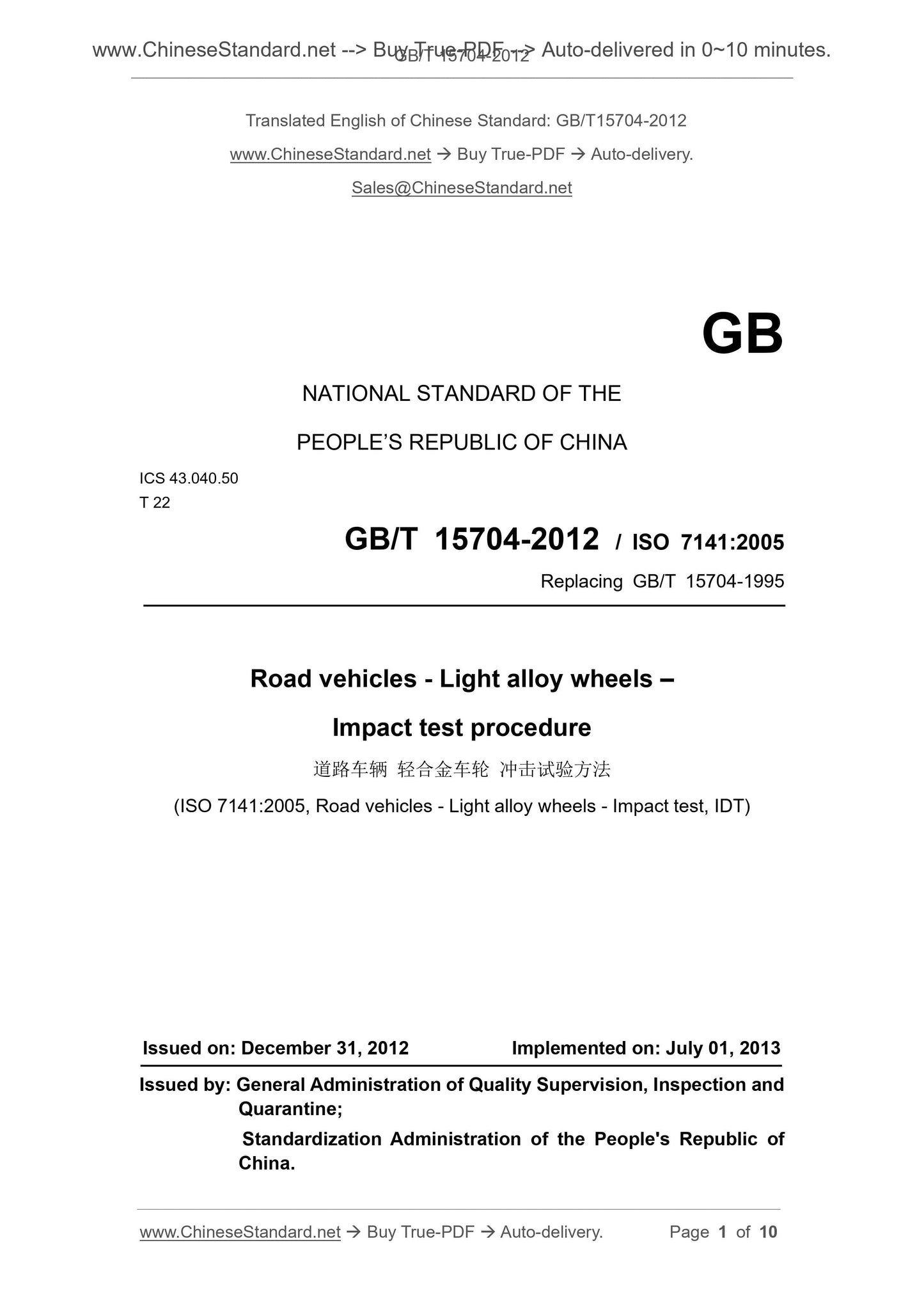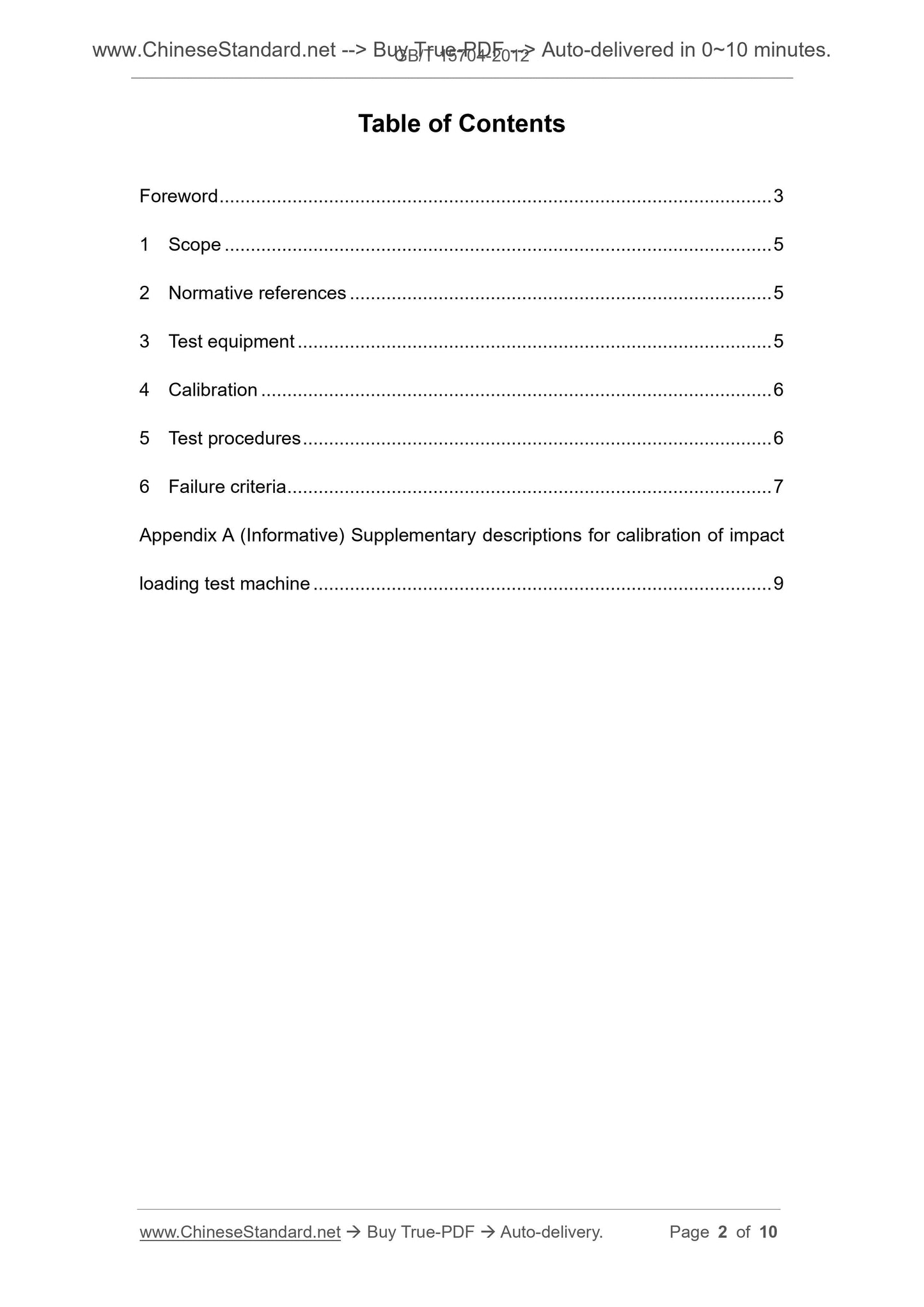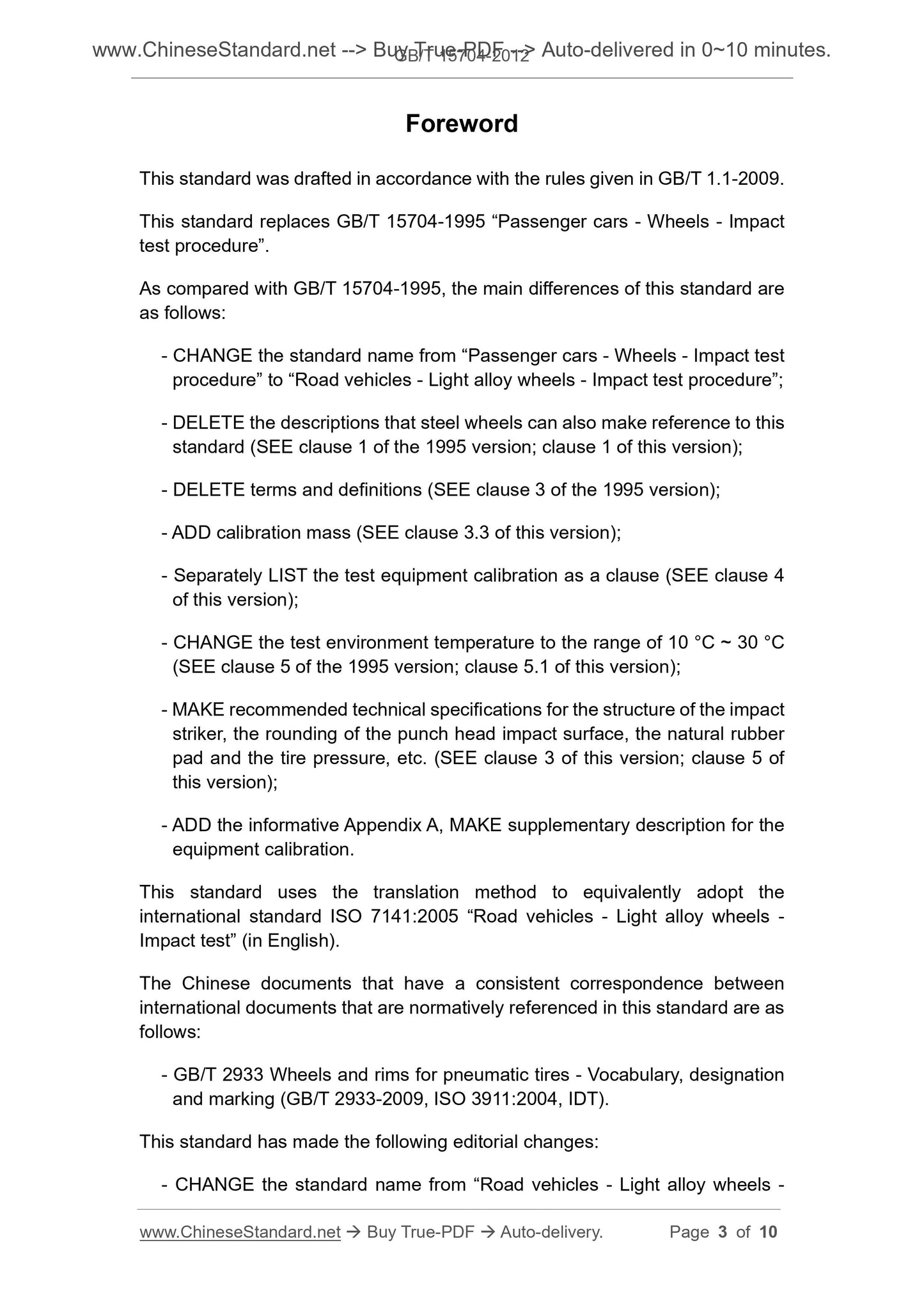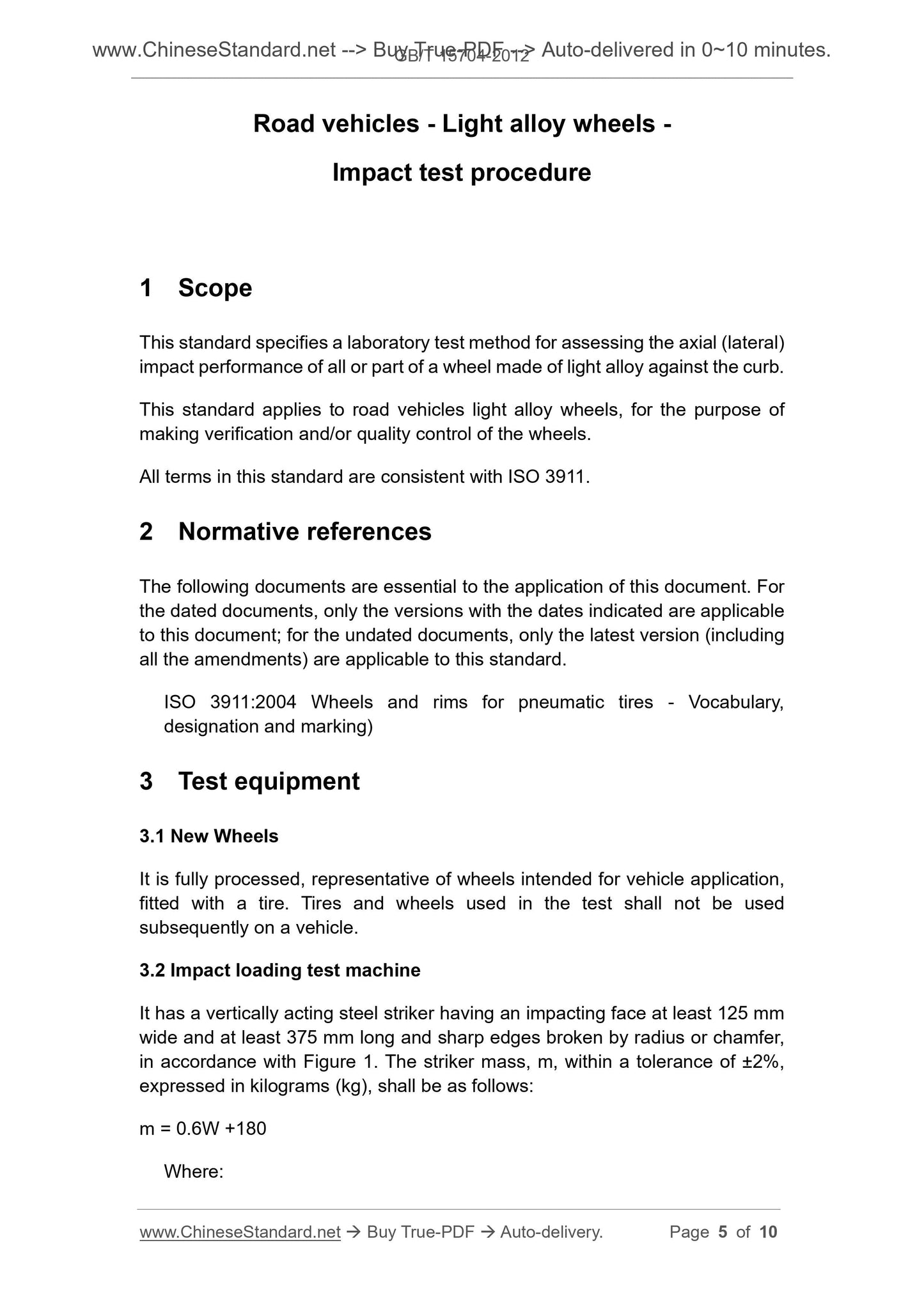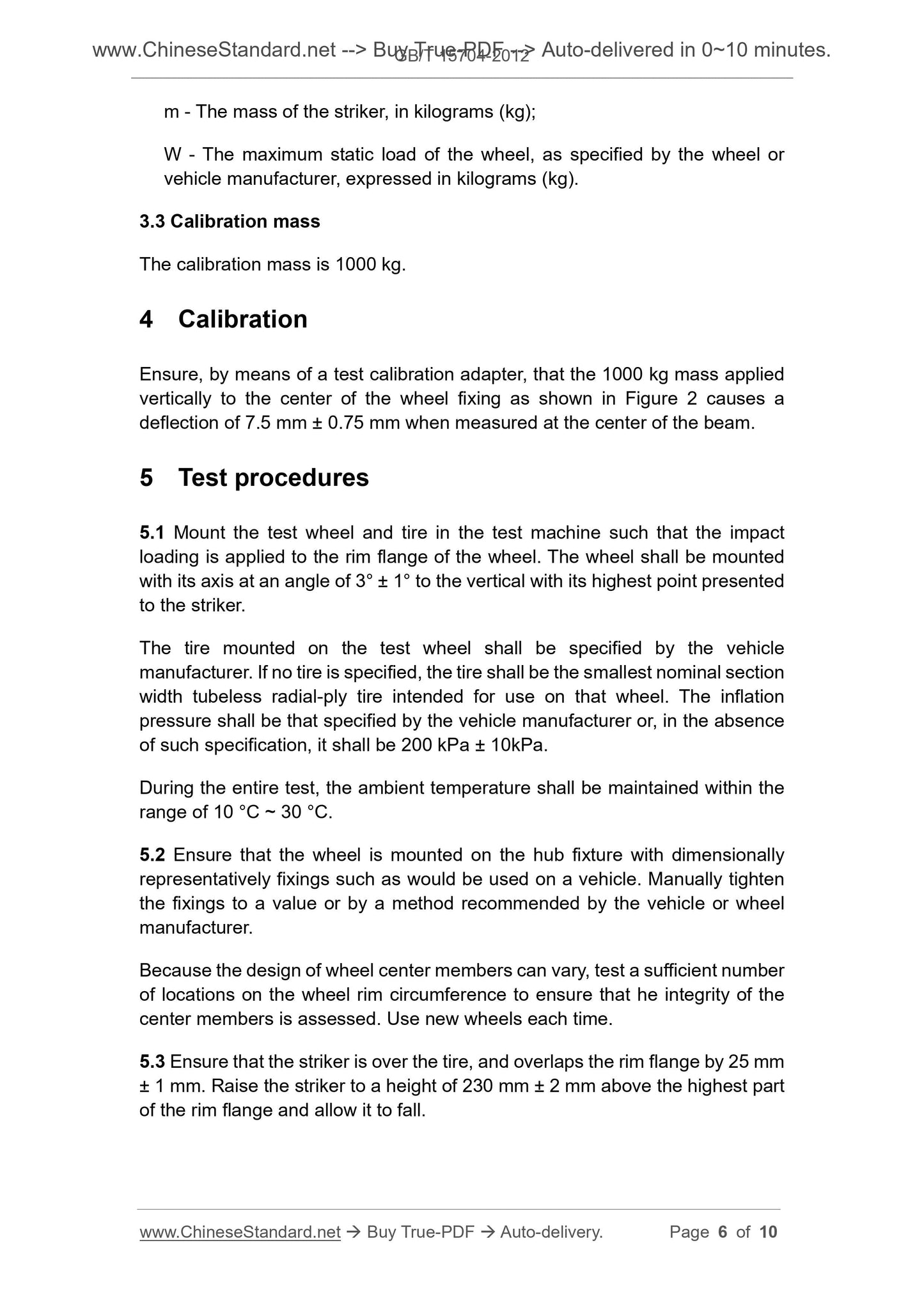1
/
of
5
www.ChineseStandard.us -- Field Test Asia Pte. Ltd.
GB/T 15704-2012 English PDF (GB/T15704-2012)
GB/T 15704-2012 English PDF (GB/T15704-2012)
Regular price
$70.00
Regular price
Sale price
$70.00
Unit price
/
per
Shipping calculated at checkout.
Couldn't load pickup availability
GB/T 15704-2012: Road vehicles -- Light alloy wheels -- Impact test procedure
Delivery: 9 seconds. Download (and Email) true-PDF + Invoice.Get Quotation: Click GB/T 15704-2012 (Self-service in 1-minute)
Newer / historical versions: GB/T 15704-2012
Preview True-PDF
Scope
This standard specifies a laboratory test method for assessing the axial (lateral) impact of a wheel made entirely or partially of light alloy.The performance of the edge.
This standard applies to road vehicle light alloy wheels for the purpose of verifying and/or quality control of the wheels.
All terms in this standard are consistent with ISO 3911.
Basic Data
| Standard ID | GB/T 15704-2012 (GB/T15704-2012) |
| Description (Translated English) | Road vehicles -- Light alloy wheels -- Impact test procedure |
| Sector / Industry | National Standard (Recommended) |
| Classification of Chinese Standard | T22 |
| Classification of International Standard | 43.040.50 |
| Word Count Estimation | 8,860 |
| Older Standard (superseded by this standard) | GB/T 15704-1995 |
| Quoted Standard | ISO 3911-2004 |
| Adopted Standard | ISO 7141-2005, IDT |
| Regulation (derived from) | National Standards Bulletin No. 41 of 2012 |
| Issuing agency(ies) | General Administration of Quality Supervision, Inspection and Quarantine of the People's Republic of China, Standardization Administration of the People's Republic of China |
| Summary | This standard specifies a laboratory test method to assess all or part of the light- alloy wheels with axial (lateral) curb impact performance. This standard applies to road vehicles light-alloy wheels, the purpose is to verify the wheel and/or quality co |
Share
